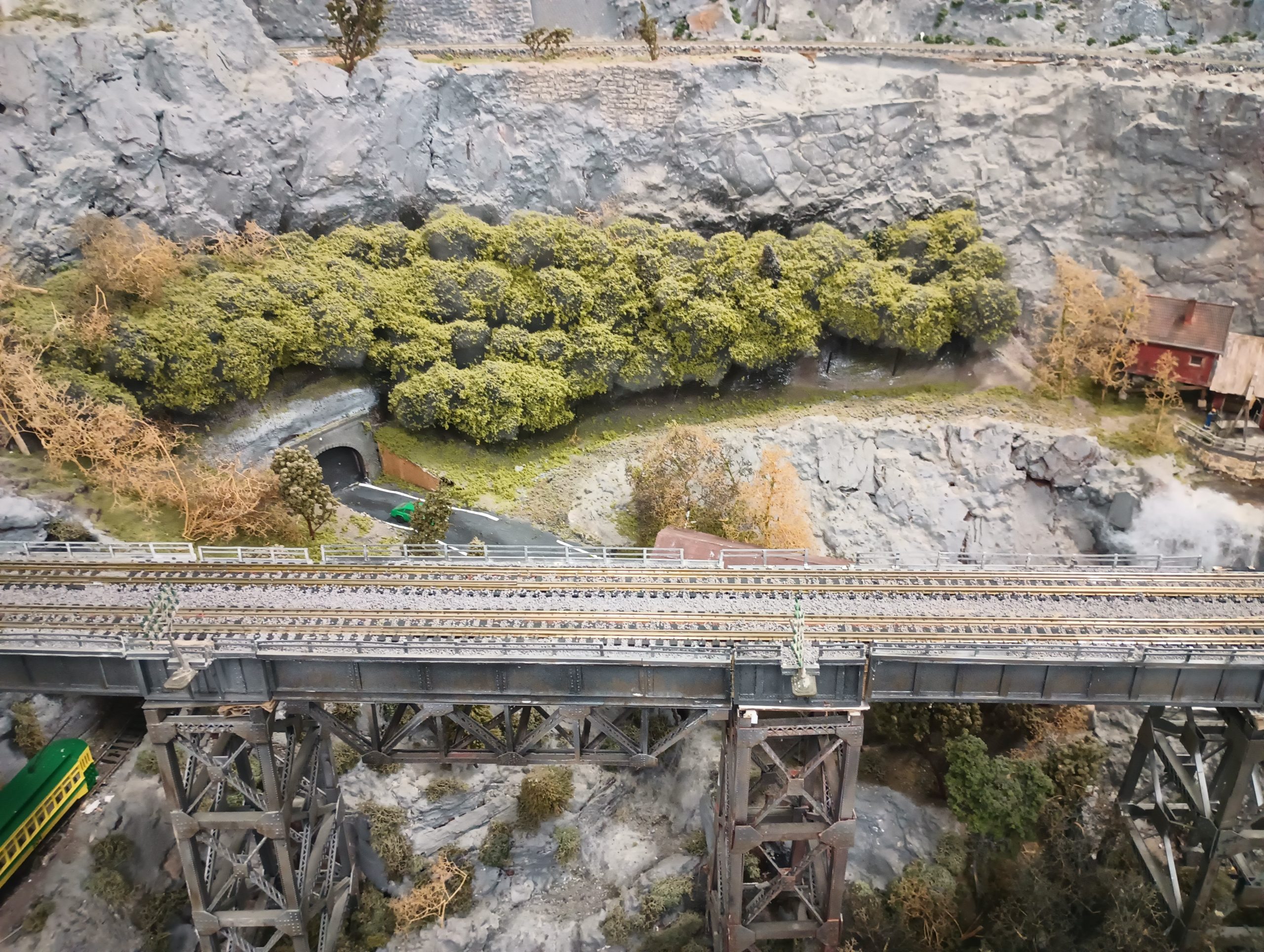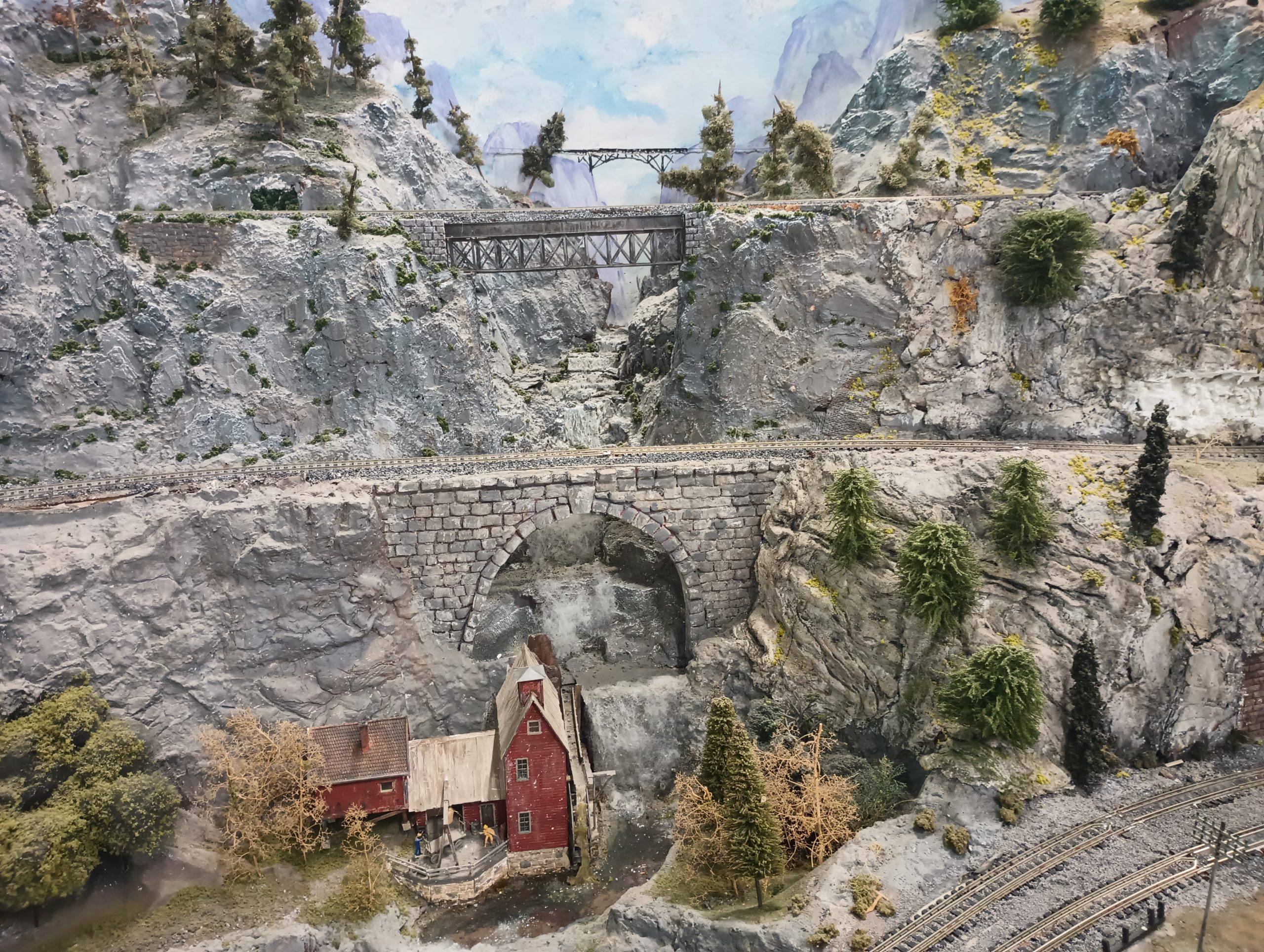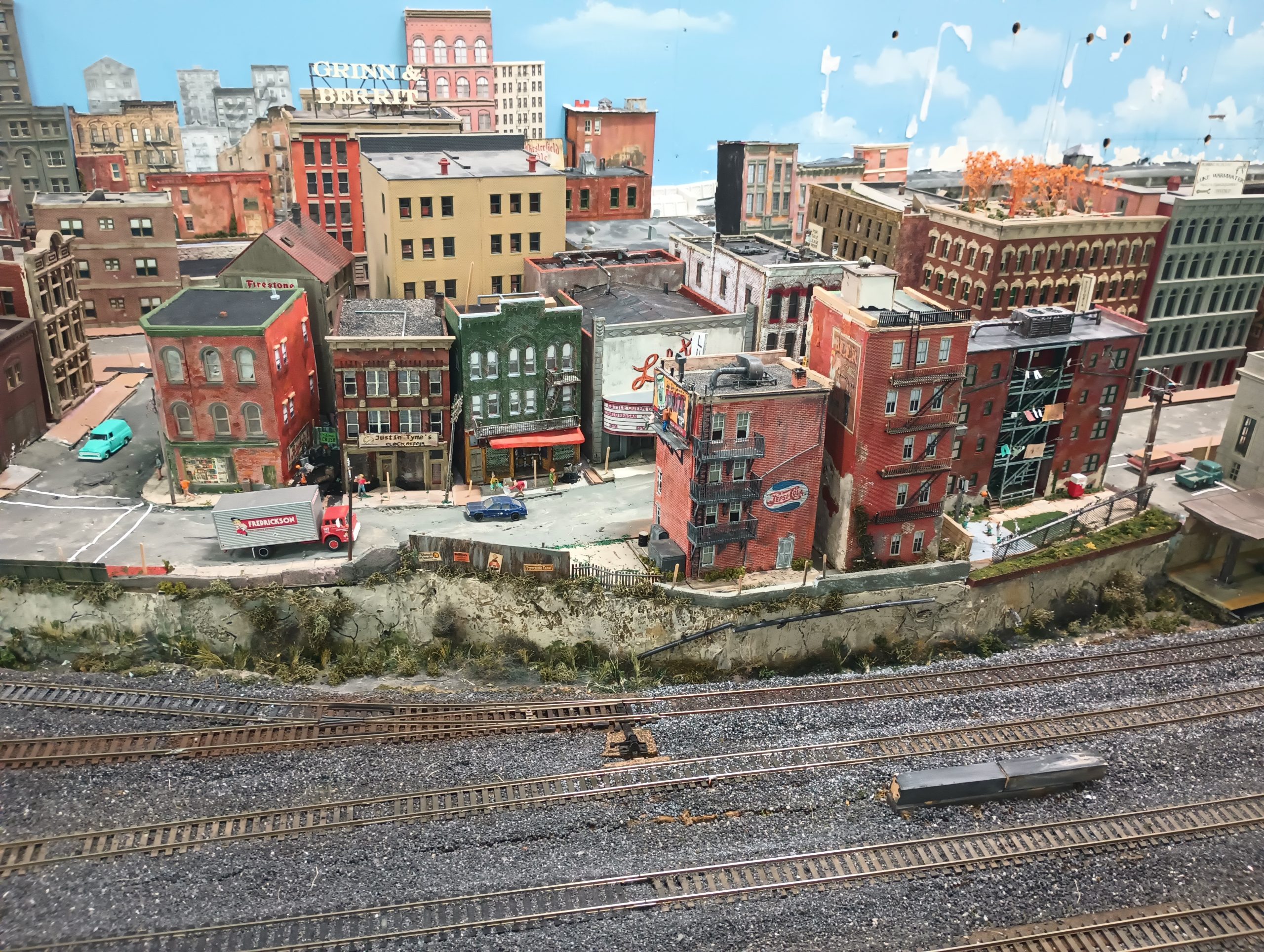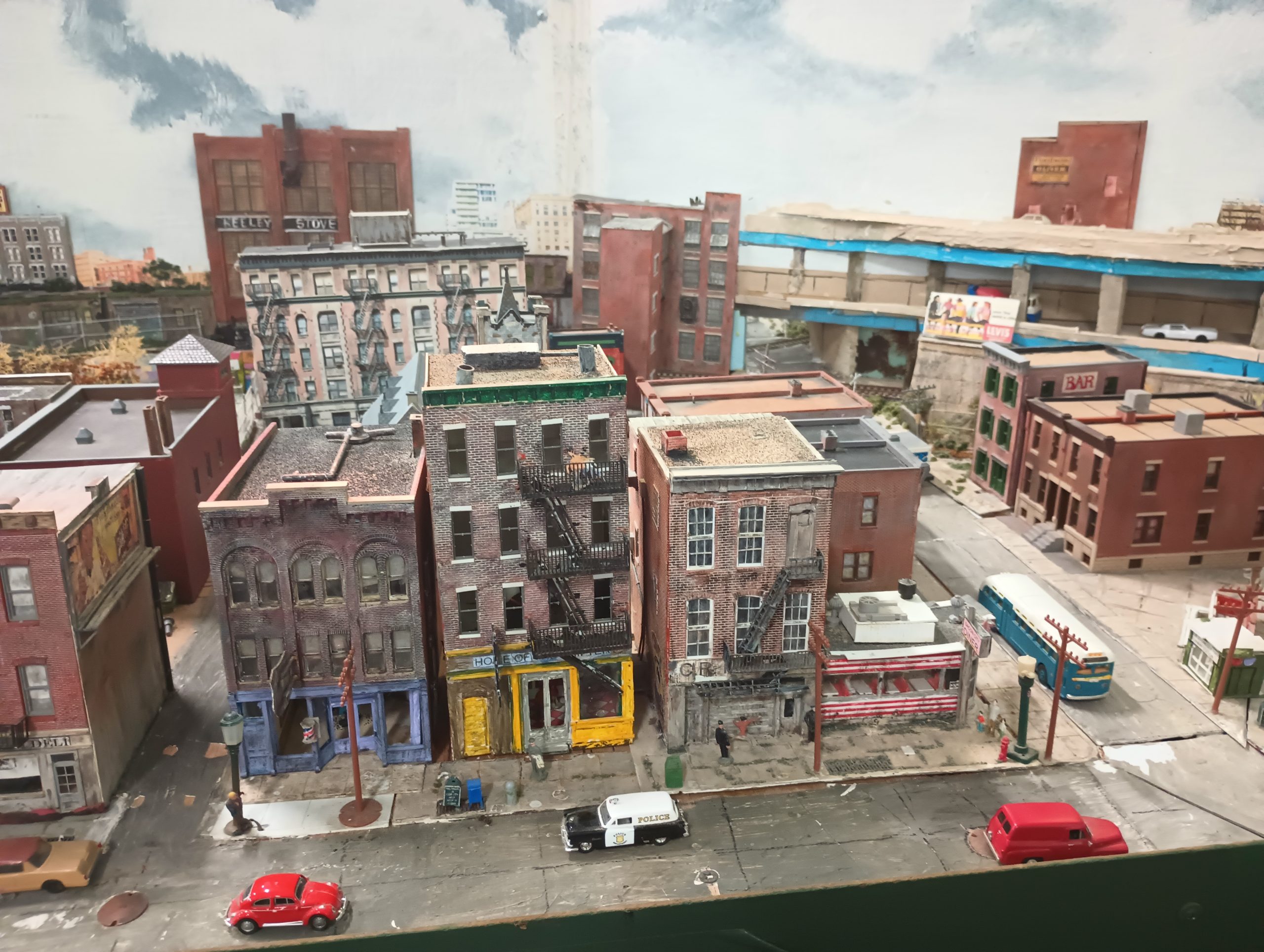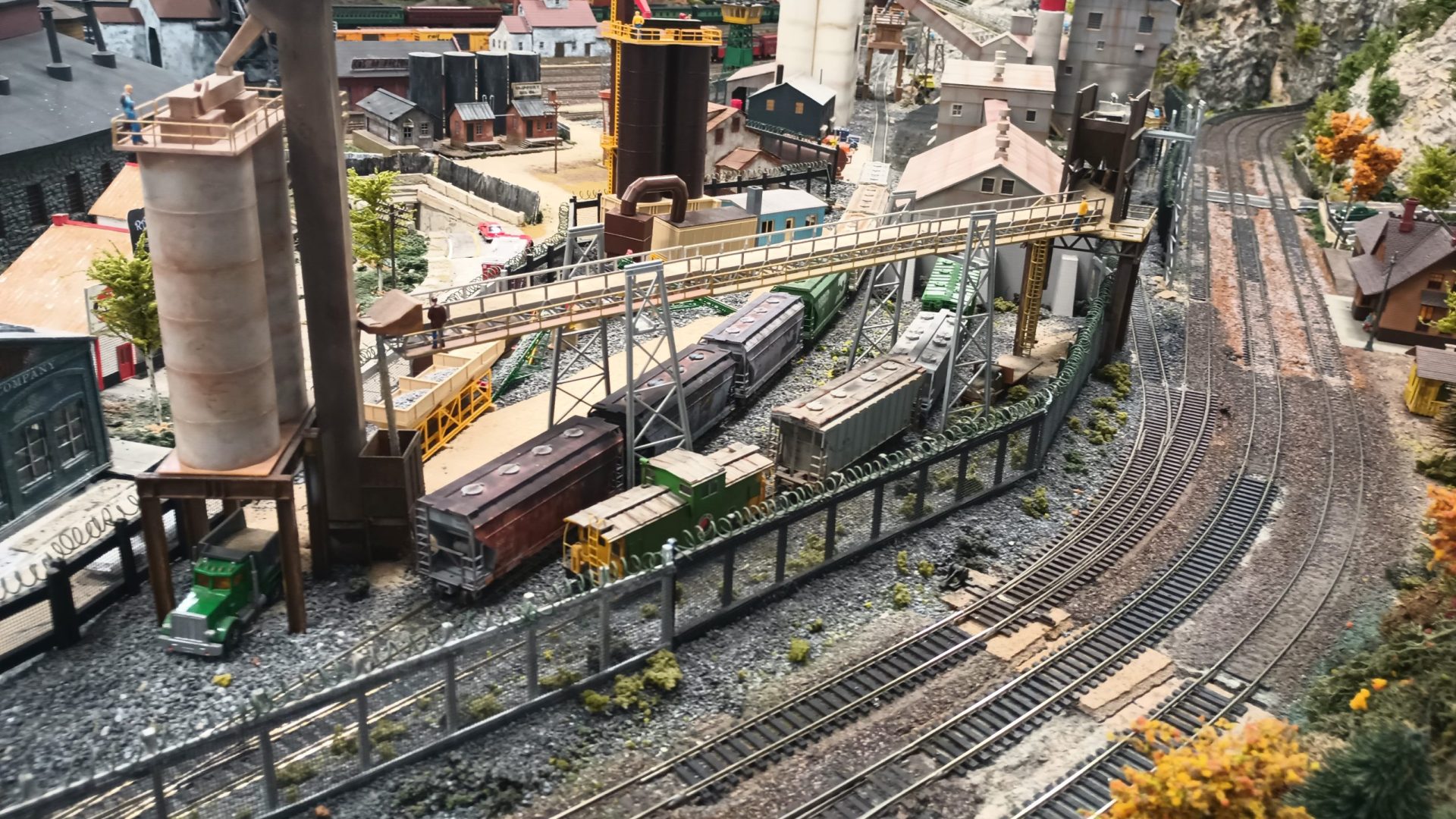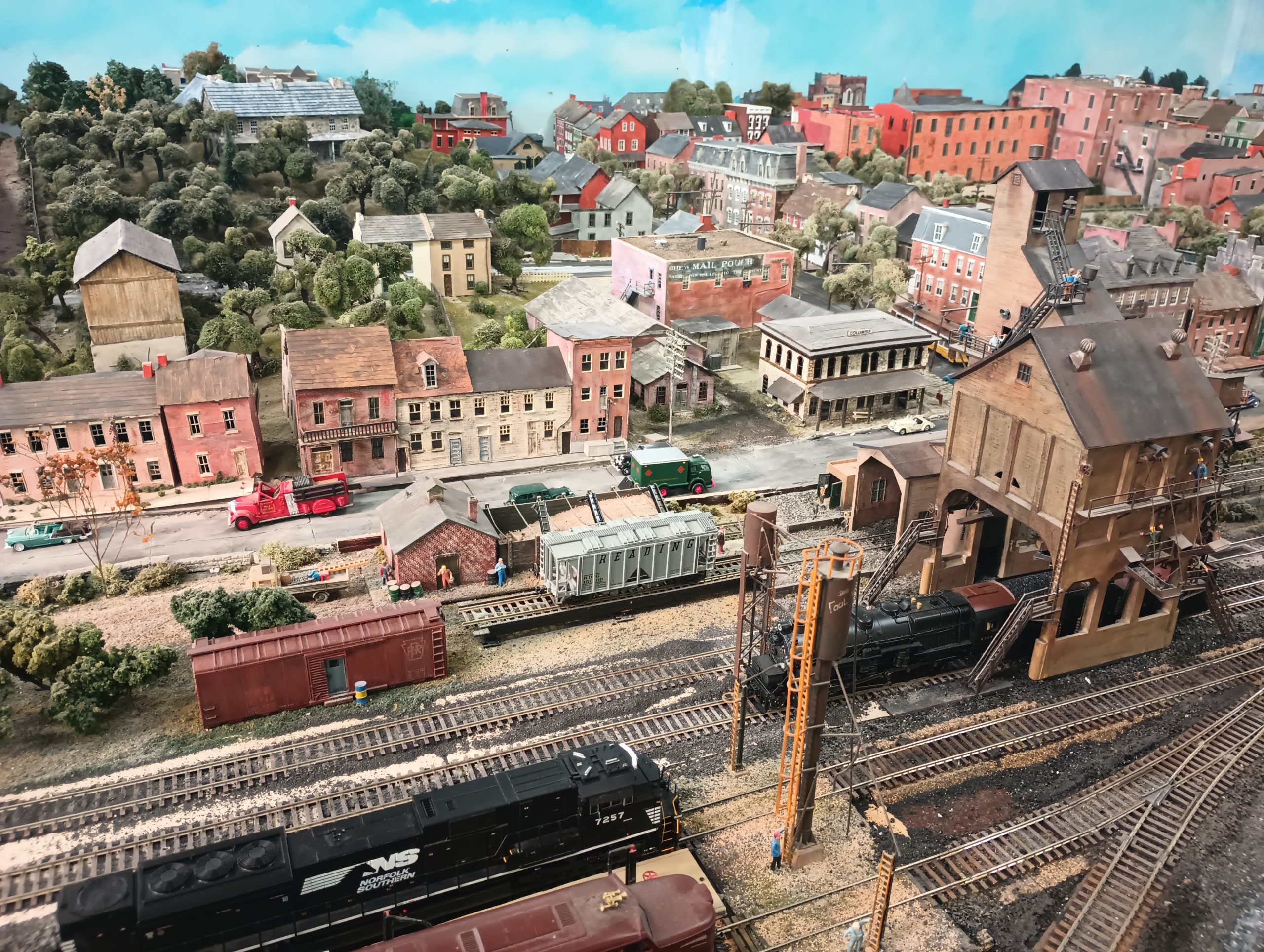
The layout started out in the basement of Jack Belsinger, a Lancaster,PA man. Being from Europe, he modeled European trains. He gave the layout to Calvin Duncan who worked to find a home for it. But the layout was smaller than what it is today. In 1993, Columbia Historic Preservation Society agreed to take the layout. It was cut into pieces because of the size and stored in the unused second floor of the history museum. In 1998, work began on preparing the unused second floor, and the train layout was reconstructed and running once again.

In 2000, it was decided to build an HO diorama of Columbia as it appeared in the first half of the 20th century. Since 2000, all the track was replaced, and Digital Command Control (DCC) was installed, replacing the Zero-1 System. Two foot high backdrops were constructed to isolate various scenes, and to direct visitors up and down aisles around the layout. The layout is an ongoing work in progress.
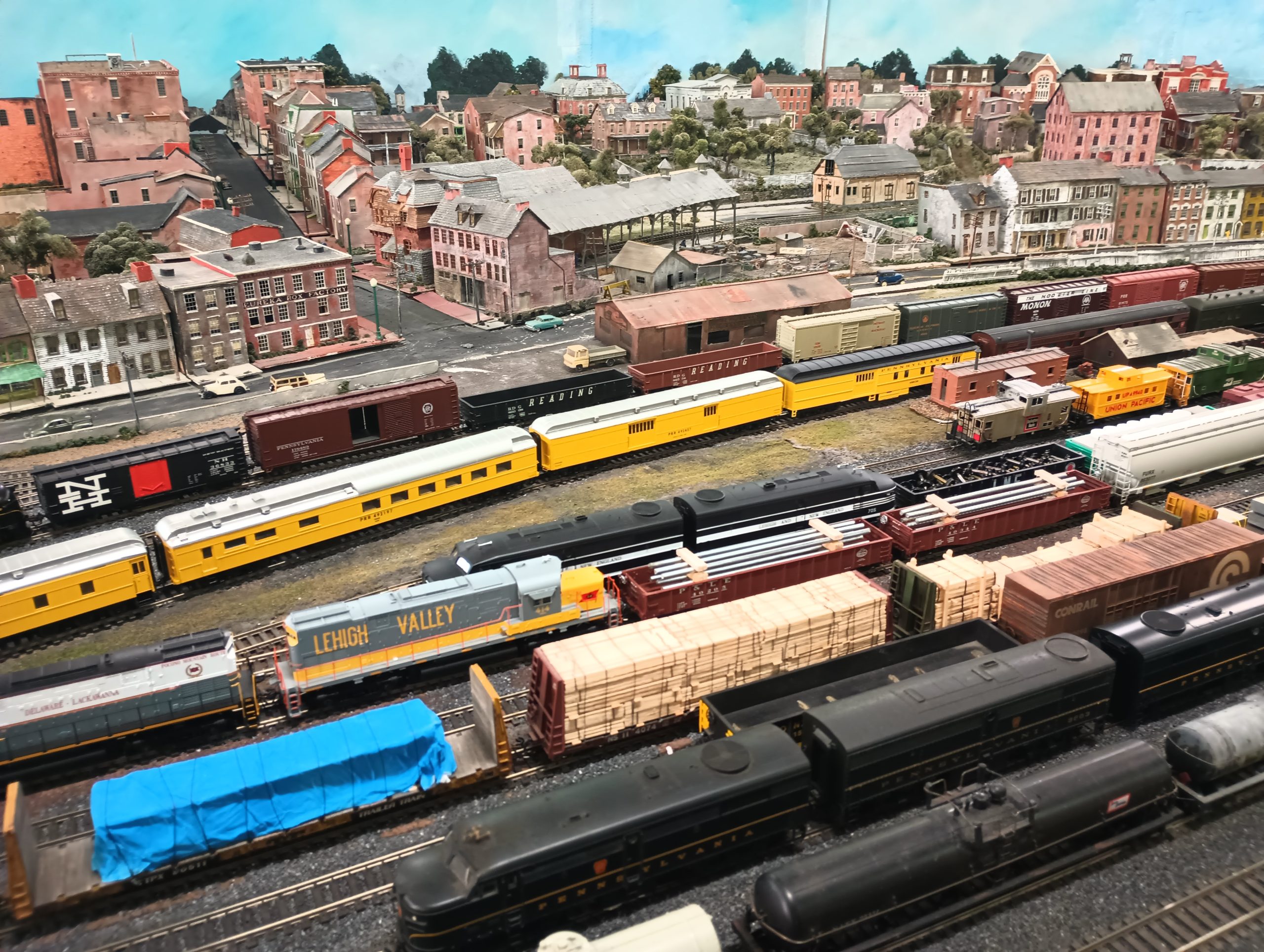
The Columbia area is prototypical (based on what actually existed). The time era of Columbia is 1920-1940. Columbia covers approximately 200 sq.ft. of the layout, and is home to a large roundhouse facility, a major yard, coaling and diesel facilities as well as two railroad stations (Pennsylvania RR and Reading RR). There are a lot of buildings and stores from that time ears as well.
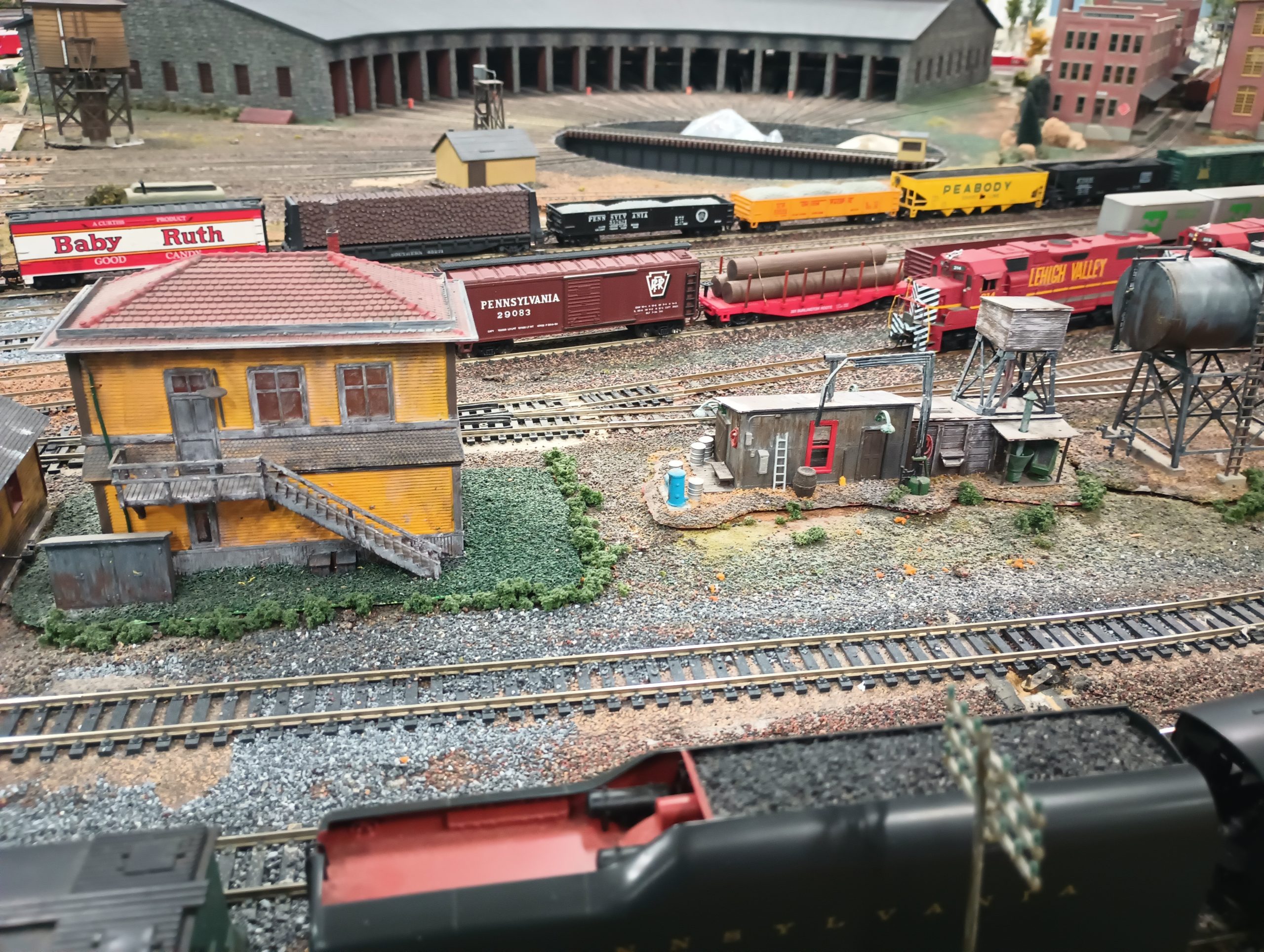
The Columbia area is prototypical (based on what actually existed). The time era of Columbia is 1920-1940. Columbia covers approximately 200 sq.ft. of the layout, and is home to a large roundhouse facility, a major yard, coaling and diesel facilities as well as two railroad stations (Pennsylvania RR and Reading RR).
Keep Expanding
We were given a 24 ft. x 10 ft. HO layout by a man in nearby Landisville. Over a period of 2 weeks (3 evenings a week), seven of us dismantled the layout into eight sections. One of our group obtained a moving van, and in one evening six “muscle guys” moved the sections from Landisville to the upstairs train room at CHPS. Most of this layout will be part of the layout expansion project. The layout includes several buildings, all the track and switch machines, a 18-stall scratch-built roundhouse and operating turntable. We purchased the turntable system and four Digitrax boosters, and a lots of trees to be used in the expansion project.
